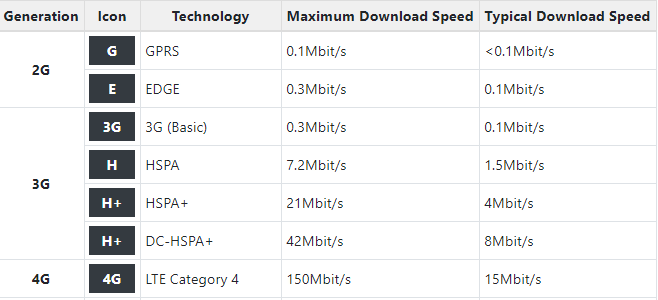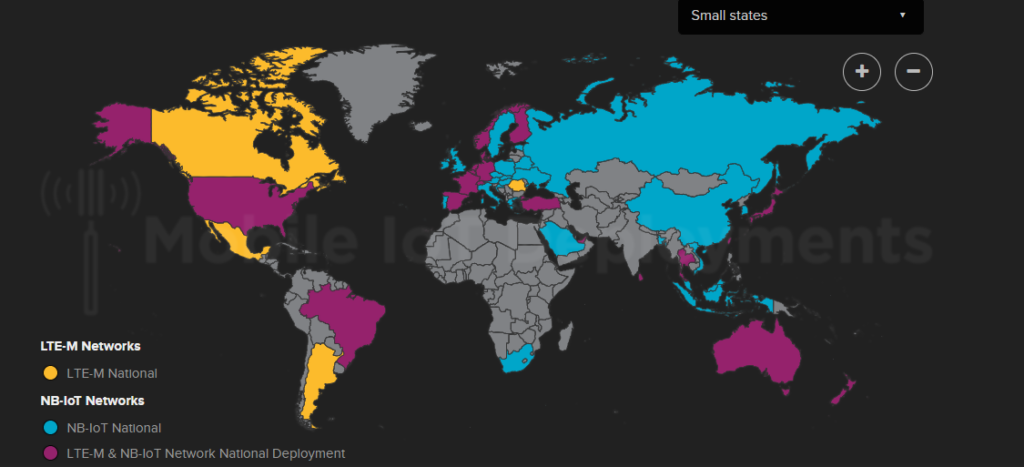
Wireless Connectivity – History and Trends
Most of us remember the time when we had to wait for an annoyingly long time for data to load over our internet connections. Even simple text would sometimes take a minute to load, because we only had dial-up wired/cable internet. However, technology and speed changed at a rapid pace. Now, we have high-speed internet running on our cell-phones 24 hours a day. So, let’s cherish this growth by discussing how we got there and what are the latest trends in the industry and IoT.
Wireless Connectivity:
Most of the wireless networks today use radio communication to connect two or more nodes (devices) together. This includes Cellular Networks, WIFI Networks, Satellites, Bluetooth and more. Wireless connectivity is the design and installation of devices that will be transmitting and receiving signals for much of M2M (Machine to Machine) connectivity.
The new Trends:
With the evolution of technology, wireless connectivity is gaining popularity day by day. A big chunk of the networking is now wireless. Our cellular systems started with1G and now 5G is beginning to be deployed. At this time most of the cellular companies are offering 2G, 3G and 4G technologies.
2G (second generation):
Launched by the Finish company Radiolinja, now Elisa, in 1991, it was the first time that digital encryption of our phone conversations became possible. Also, it offered SMS and MMS technologies that were not present in the earlier generation.
Due to its high efficiency, 2G allowed greater mobile phone penetration (number of sim cards/ phone numbers)
2G originally had a speed of 128 Kbps. Later, it was updated to 2.5G at 256 Kbps. 2G is still being widely used around the world.
3G (third generation):
3rd generation networks emerged in 1998. It brought along faster transmitting speeds that allowed internet access and video calling features.
At this time we also started to see the adoption of IoT solutions like GPS tracking on 2G and 3G networks.
With the max speed of 3Mbps for non-moving and 384 kbps for moving devices, 3G was the first to introduce the term “mobile broadband”. Some later version of 3G could provide the speed up to 10 MBps for download and 5 Mbps upload. 3G provided “all-in a mobile environment” by allowing Internet access, voice and video calling features and streaming content on mobile devices.
All cellular networks are also better in terms of the security they offer. The UE (user equipment) ensures that the network connections are validated and verified before establishing a connection.
4G-LTE (fourth generation):
4G networks are also called Long Term Evolution (LTE); it is a single platform for many wireless networks. Released in 2008, 4G networks support internet access and high-quality video and live streaming.
The maximum speed of a 4G/LTE network is 150Mbps. And if the user is moving then the speed could be as high as 100 Mbps. Globally today, 3G and 4G technologies are most widely used technologies.
LTE provides the ultimate internet experience with IP packet delay being less than 5 milliseconds somewhat similar to wired broadband internet.
LTE was introduced with the purpose of increasing the capacity and speed of wireless networks.

LTE CAT M1
LTE CAT M1 is the standard developed specifically for M2M, IOT applications. This standard uses only small part of LTE channel bandwidth -1 MB and as such allows better utilization of it. CAT M1 also allows for a lower power consumption of the devices. LTE CAT M1 can be used for the tracking of moving devices or assets as the latency of the mode is still low. The devices using LTE CAT M1 standard generally offers lower manufacturing cost due to lower module costs. LTE CAT M1 will be the most widely used standard in IOT for the tracking of moving assets.
NB-IoT:
Like LTE-CAT M1, this standard was also developed by 3GPP (3rd Generation Partnership Project). NarrowBand-Internet of Things uses LPWA (low power wide area) technology. It improves the spectrum of services and devices, especially focusing on indoor and deep coverage, and improved battery life of devices. NB-IOT uses even less bandwidth than LTE CAT M1 – only 100 KHz and as such can transmit data at very low speed of 250 Kbits per second. The latency (delay) can be as large as 10 seconds and because of it, this mode is not recommended to be used with the tracking of moving objects.
Because Narrow Bank IoT technologies- NB-IoT and LTE CAT M1 -IoT are able to conserve battery life by utilizing a small, highly efficient segment of bandwidth, the device battery life can be increased up to 10 years. The increase in battery life enables developers much more flexibility to deploy devices in more and more remote locations and increases the ways M2/M/IoT is being used. There are a variety of use cases for NB from smart cars and bicycles to controlling appliances and smart meters.

Image Courtesy GSMA.com
Benefits of Narrow Band Technologies:
- Low Power Consumption:
All IoT technologies consume low power when they are in operation. It was one of the goals of LTE CAT M1 and NB-IoT to save power consumption and improve the battery life of the devices connected to it.
- Cost Efficient:
The components required for NB are less expensive, in comparison to just LTE chipsets, IoT chipsets are uniformly priced and cost effective as they are easy to manufacture. Processing a simpler waveform is also much simpler to create.
- More Cellular devices:
Narrow band devices use less bandwidth allowing the network to support many more devices at the same time. This is a critical factor as the growth in M2M/IoT is exploding with no signs of slowing. According to a McKinsey study, the number of connected devices by 2023 will grow to 43 Billion – 10 times the number of connected devices in 2018.
In addition due to the lower transmission speed, Narrow Band devices allow more penetration indoors or inside basements. It also offers a more secure connection. Moreover, the deployment is easy and due to its wide range, this technology has grown popularity.
NB-IoT vs LTE CAM M1:
- NB-IoT is a full-time commitment:
The hardware and Software both are made use of in the NB-IoT so it is not possible to take a middle route and use NB-IoT with a combination of other technologies. However, there are a few chips that allow this but are relatively expensive. So if you decide to deploy NB-IoT, you’ll have to rely on it completely.
- Suitable for Stationary Assets:
Assets in motion don’t work as well with devices other than the ones that are fixed at a point. An asset using NB-IoT that isn’t stationary does not behave well and can only be improved by installing more towers.
There are very few NB-IOT networks yet:
Roaming across networks is also an enormous challenge and some device manufacturers are making NB-IoT devices that usually do not fall back to 4G and thus will not be able to work outside of the country.
LTE CAT M1:
- There are many more LTE-CAT M1 networks today being rolled out in the world.
- This technology can be used both for moving and stationary assets.
- Devices crossing the country border will have better coverage and options for roaming.
Finally, these technologies are constantly improving and we see new releases every few years. These developments are beneficial in M2M wireless communication.
Further work is being carried out to improve wireless connectivity with the development of 5G technology. It is expected to be released more wide-spread in 2020.
